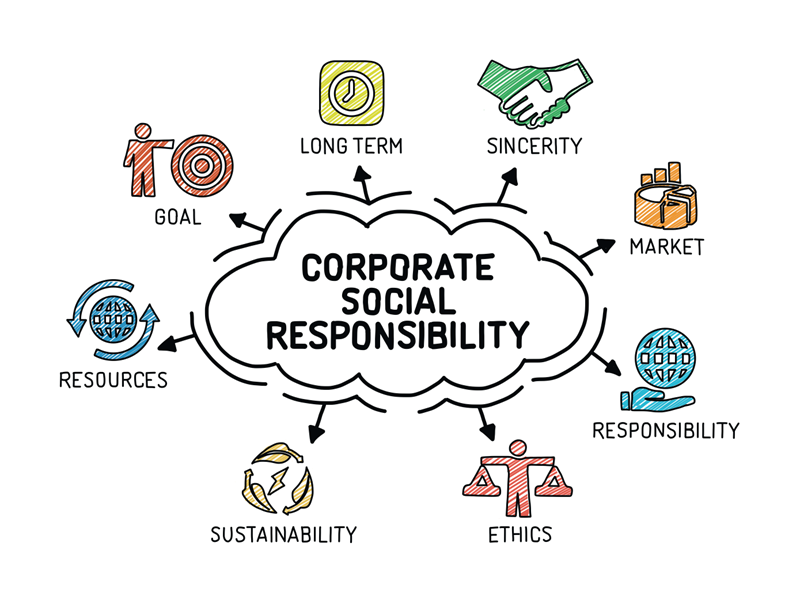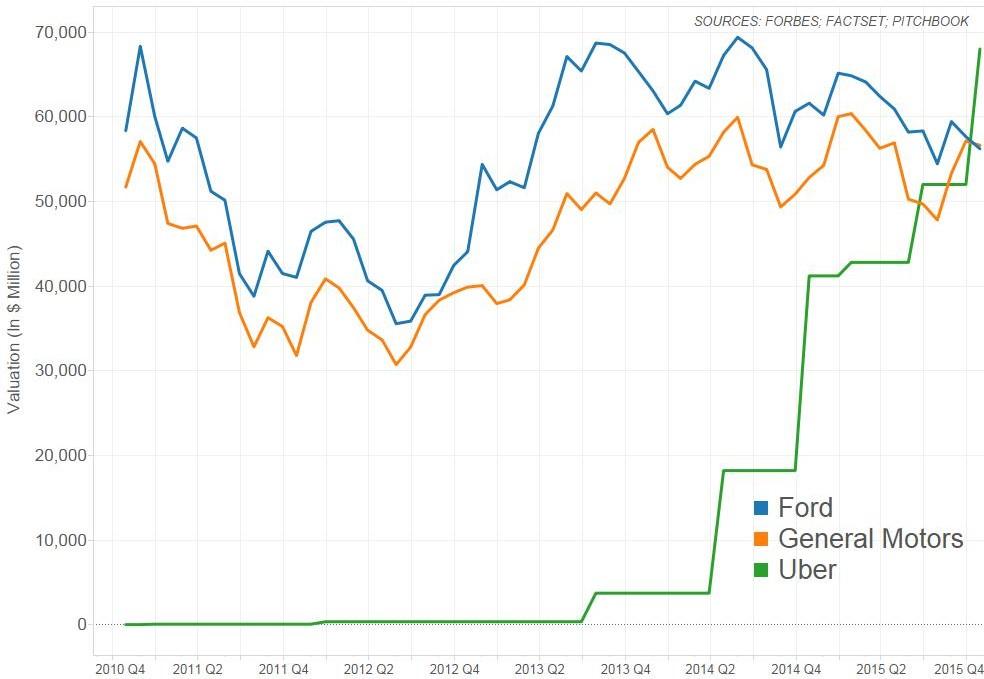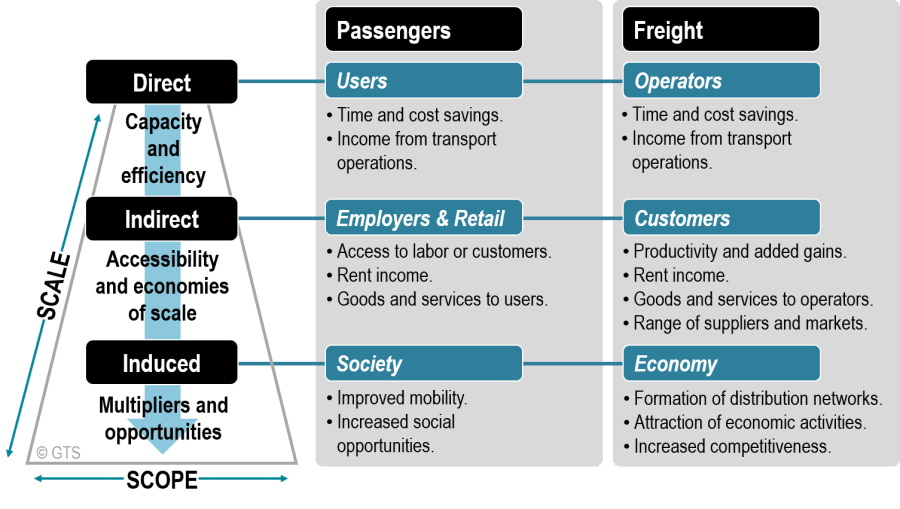Environmental sustainability
Cultivating Impact: Corporate Social Responsibility Initiatives

Cultivating Impact: Corporate Social Responsibility Initiatives
Corporate social responsibility (CSR) initiatives have evolved from mere corporate goodwill to integral components of a company’s identity. Beyond financial success, modern businesses recognize the importance of contributing positively to society. In this article, we delve into the significance of CSR initiatives and their impact on businesses and communities.
Defining Corporate Social Responsibility
At its core, corporate social responsibility involves businesses proactively taking steps to ensure their operations positively impact society. This goes beyond legal and ethical obligations, encompassing voluntary actions that contribute to environmental sustainability, social well-being, and ethical business practices. Companies engaging in CSR initiatives acknowledge their role as responsible corporate citizens.
Environmental Sustainability: A Key Focus
Many CSR initiatives center around environmental sustainability. Companies are increasingly adopting eco-friendly practices, reducing their carbon footprint, and investing in renewable energy sources. These initiatives not only contribute to global efforts to combat climate change but also resonate positively with environmentally conscious consumers.
Social Impact: Supporting Communities
CSR initiatives often extend to supporting local communities. This can involve charitable donations, community development projects, or partnerships with local nonprofits. By actively participating in community initiatives, companies strengthen their ties with the regions where they operate and contribute to the overall well-being of society.
Ethical Business Practices: Transparency and Fairness
Ethical business practices are fundamental to CSR initiatives. Companies committed to corporate social responsibility prioritize transparency in their operations, adhere to fair labor practices, and promote diversity and inclusion. Such practices create a positive corporate culture and enhance the reputation of the business.
Employee Welfare: Fostering a Positive Work Environment
CSR initiatives extend to the welfare of employees. Companies that prioritize their workforce through initiatives such as employee wellness programs, fair compensation, and professional development opportunities contribute to a positive work environment. This, in turn, enhances employee satisfaction and retention.
Philanthropy and Charitable Giving
Philanthropy is a cornerstone of many CSR initiatives. Companies engage in charitable giving by donating to causes aligned with their values. Whether supporting education, healthcare, or disaster relief, philanthropic efforts showcase a company’s commitment to making a meaningful impact beyond its core business operations.
Global Citizenship: Addressing Global Challenges
In an interconnected world, CSR initiatives often extend beyond local communities. Companies embrace their role as global citizens by addressing pressing global challenges. This can involve initiatives to alleviate poverty, promote education, or provide aid in times of international crises.
Consumer Influence: Aligning Values with Choices
Modern consumers increasingly make purchasing decisions based on a company’s values and social responsibility. Businesses with robust CSR initiatives not only attract socially conscious consumers but also build brand loyalty. Communicating CSR efforts effectively can influence consumers to choose products or services from socially responsible companies.
CSR Reporting and Accountability
As CSR initiatives become integral to business strategies, companies are adopting transparent reporting mechanisms. CSR reports detail the impact of initiatives, track progress towards goals, and hold companies accountable for their commitments. This transparency builds trust among stakeholders and reinforces the company’s dedication to social responsibility.
Vexhibits: Leading
Economic Policy’s Business Impact: Navigating Challenges

Introduction:
Economic policies wield substantial influence on the business landscape, shaping conditions that directly impact companies. In this exploration, we delve into the intricate interplay between economic policies and businesses, examining the challenges and opportunities they bring.
Policy Frameworks and Regulatory Environment: Defining Business Parameters:
Economic policies establish the framework within which businesses operate. The regulatory environment, shaped by policies, sets the rules and standards that businesses must adhere to. Understanding these frameworks is crucial for businesses to navigate legal landscapes, compliance requirements, and industry regulations.
Fiscal Policies: Taxation and Government Spending Dynamics:
Fiscal policies, encompassing taxation and government spending, have a profound impact on businesses. Tax rates influence corporate finances, affecting investment decisions and profit margins. Government spending, on the other hand, can stimulate economic activity, presenting opportunities for businesses in specific sectors.
Monetary Policies: Interest Rates and Credit Conditions:
Monetary policies, primarily dictated by central banks, influence interest rates and credit conditions. Changes in interest rates impact borrowing costs for businesses. Tightening or loosening credit conditions can affect liquidity, investment, and overall economic activity, directly shaping business strategies and financial decisions.
Trade Policies: Global Market Dynamics and Business Expansion:
For businesses engaged in international trade, trade policies play a pivotal role. Tariffs, trade agreements, and export-import regulations directly influence market access and competitiveness. Businesses must adapt to evolving trade policies, seizing opportunities for expansion or mitigating risks associated with global market dynamics.
Labor Market Policies: Workforce Dynamics and Employment Practices:
Economic policies related to the labor market shape workforce dynamics and employment practices. Minimum wage laws, labor regulations, and employment incentives impact business operations and human resource strategies. Adapting to these policies is essential for maintaining a skilled and motivated workforce.
Environmental and Sustainability Policies: Navigating Green Business Practices:
In an era of heightened environmental awareness, policies related to sustainability and environmental protection impact businesses. Companies are increasingly compelled to adopt green practices, reduce carbon footprints, and comply with environmental regulations. Aligning business strategies with these policies is not only ethically responsible but also essential for long-term viability.
Technology and Innovation Policies: Driving Technological Advancements:
Governments often formulate policies to drive technological advancements and innovation. Businesses operating in technology-intensive sectors benefit from supportive policies that foster research and development, intellectual property protection, and innovation incentives. Adapting to these policies positions companies at the forefront of technological progress.
Social and Welfare Policies: Addressing Social Responsibility:
Social and welfare policies address societal concerns and impact businesses’ social responsibility initiatives. Companies are increasingly expected to contribute to community welfare, diversity, and inclusion. Aligning corporate strategies with these policies enhances brand reputation and fosters positive relationships with stakeholders.
Political Stability and Economic Confidence: Impact on Investment Climate:
Political stability is a foundational factor influencing the business environment. Economic policies are often shaped by political decisions, and a stable political climate fosters economic confidence. Businesses thrive in environments where there’s predictability, as it encourages long-term investments, expansion, and strategic planning.
Economic Policy Impact on Business: Navigating Opportunities and Challenges:
Explore the dynamic interaction
Industrial Momentum: Manufacturing Output in the USA

Driving Economic Engines: Manufacturing Output in the USA
The manufacturing sector serves as a barometer for a nation’s economic health, and understanding the nuances of manufacturing output in the USA is crucial. This article explores the dynamics, trends, and implications of manufacturing output, shedding light on its significance in the broader economic landscape.
Economic Pillar: Manufacturing’s Integral Role
Manufacturing holds a foundational role in the USA’s economic framework. Beyond creating products, it generates employment, fosters innovation, and contributes significantly to the country’s GDP. Analyzing manufacturing output provides insights into the overall economic pulse and the sector’s resilience.
Cyclical Nature: Manufacturing in Economic Cycles
Manufacturing output often mirrors economic cycles. During periods of expansion, production tends to rise, driving economic growth. Conversely, in downturns, reduced consumer demand may lead to production slowdowns. Recognizing the cyclical nature of manufacturing output is key for economic planners and businesses alike.
Global Interconnectedness: International Trade Impact
The USA’s manufacturing output is intricately linked to global trade. The demand for American-made goods on the international stage influences production levels. Trade policies, tariffs, and geopolitical shifts play a role in shaping the trajectory of manufacturing output and its contribution to the balance of trade.
Technological Advancements: Industry 4.0 Transformations
The advent of Industry 4.0, marked by technological advancements like automation, IoT, and artificial intelligence, has transformed manufacturing processes. Understanding how these technologies impact output efficiency, product innovation, and overall competitiveness is vital for staying abreast of industry trends.
Employment Landscape: Manufacturing Jobs and Skills
Changes in manufacturing output have direct implications for employment. While technological advancements may enhance productivity, they also impact labor requirements. Examining the evolving employment landscape within manufacturing sheds light on the skills needed in the industry and potential workforce challenges.
Supply Chain Resilience: Lessons from Disruptions
Recent global disruptions have underscored the importance of supply chain resilience. Manufacturing output can be significantly affected by disruptions in the supply chain, whether due to natural disasters, geopolitical events, or unforeseen crises. Evaluating strategies to enhance supply chain resilience is paramount for the manufacturing sector.
Environmental Sustainability: Balancing Production and Impact
Manufacturing output has environmental implications, from resource consumption to waste generation. The industry faces increasing pressure to adopt sustainable practices. Analyzing how manufacturers balance production needs with environmental impact and the adoption of eco-friendly initiatives is crucial for a sustainable future.
Government Policies: Shaping Manufacturing Landscape
Government policies play a substantial role in shaping the manufacturing landscape. Tax incentives, trade agreements, and regulations can influence output levels. Understanding the impact of policy changes provides insights into the potential trajectory of manufacturing output and its broader economic consequences.
Visit Manufacturing Output in the USA for In-Depth Insights
For those seeking in-depth insights into manufacturing output in the USA, visit Manufacturing Output in the USA. The curated analysis and information provided can empower businesses, policymakers, and individuals with the knowledge needed to navigate the complexities of the manufacturing sector.
In conclusion, manufacturing output is a multifaceted economic indicator that goes beyond production numbers. It reflects technological
Sharing Economy’s Economic Impact: A Comprehensive Analysis

Sharing Economy’s Economic Impact: A Comprehensive Analysis
The emergence of the sharing economy has revolutionized traditional business models, bringing forth a myriad of economic implications that ripple across industries. This exploration delves into the multifaceted economic dynamics of the sharing economy, shedding light on both its positive and challenging effects on businesses, consumers, and the broader economic landscape.
Redefining Consumer Behavior and Expenditure Patterns
The sharing economy has redefined how consumers access goods and services, altering traditional expenditure patterns. With the rise of platforms facilitating peer-to-peer transactions, consumers increasingly opt for shared access over ownership. This shift has economic implications, impacting industries like transportation and accommodation, as consumers prioritize experiences over possessions, altering the demand for certain products and services.
Job Creation and Gig Economy Opportunities
One of the notable economic implications of the sharing economy is the creation of job opportunities within the gig economy. Platforms connecting individuals for tasks such as ride-sharing, freelance work, and short-term rentals empower individuals to monetize their assets and skills. While this opens avenues for flexible employment, it also brings challenges related to job security, benefits, and regulatory considerations.
Impact on Traditional Industries and Market Disruption
The sharing economy has disrupted traditional industries, challenging established business models. Sectors like hospitality, taxi services, and retail have faced intensified competition from sharing economy platforms. This disruption sparks economic debates as it raises questions about fair competition, regulatory frameworks, and the adaptability of traditional industries to evolving market dynamics.
Regulatory Challenges and Government Response
The rapid growth of the sharing economy has posed regulatory challenges for governments worldwide. Balancing innovation with consumer protection and fair competition requires nuanced approaches. Governments grapple with establishing regulatory frameworks that ensure safety, tax compliance, and fair labor practices without stifling the economic potential of sharing economy platforms.
Economic Inclusion and Access to Services
The sharing economy fosters economic inclusion by providing access to services that might be otherwise unaffordable or unavailable. Ride-sharing, co-working spaces, and peer-to-peer lending platforms democratize access, empowering individuals who may have been excluded from certain services in traditional models. This economic inclusion aspect has both positive societal and economic impacts.
Asset Utilization and Environmental Sustainability
From shared rides to accommodation, the sharing economy optimizes asset utilization, promoting environmental sustainability. By maximizing the use of existing resources, the sharing economy contributes to reduced waste and environmental impact. This economic benefit aligns with growing consumer preferences for eco-friendly practices and positions sharing economy platforms as contributors to sustainable development.
Data Privacy Concerns and Trust Dynamics
The sharing economy heavily relies on data-driven transactions, raising concerns about data privacy and trust. Economic implications arise as consumers grapple with the trade-off between convenience and the protection of their personal information. Building and maintaining trust become crucial for the sustained success of sharing economy platforms, with economic consequences tied to their ability to address privacy concerns.
Market Monopolization and Anti-Competitive Practices
As certain sharing economy platforms grow in prominence, concerns about market monopolization and anti-competitive practices emerge. Economic implications include reduced
Driving Prosperity: Transportation Industry’s Economic Impact

Driving Prosperity: The Interconnected Role of the Transportation Industry in Economic Growth
The transportation industry serves as a backbone for economic development, playing a pivotal role in connecting markets, facilitating trade, and driving overall prosperity. This article delves into the intricate relationship between the transportation industry and economic growth.
Foundations of Economic Connectivity
The transportation industry forms the bedrock of economic connectivity, providing the essential infrastructure that enables the movement of goods, services, and people. Efficient transportation networks are fundamental to fostering regional and global economic integration, opening avenues for trade and commerce.
Trade Facilitation and Global Markets Access
One of the primary contributions of the transportation industry to economic growth is its role in trade facilitation. Efficient transportation systems reduce the cost and time involved in moving goods, making it easier for businesses to access global markets. This connectivity encourages international trade, leading to increased economic activities and expanded opportunities for businesses.
Job Creation and Workforce Mobility
Investments in the transportation sector contribute significantly to job creation. From constructing and maintaining infrastructure to operating transportation services, the industry generates employment opportunities across various skill levels. Additionally, a well-developed transportation network enhances workforce mobility, allowing individuals to access a broader range of job opportunities.
Supply Chain Optimization and Efficiency
The transportation industry plays a critical role in supply chain optimization. Businesses rely on efficient transportation networks to streamline the movement of raw materials and finished products. Optimized supply chains contribute to cost savings, reduce lead times, and enhance overall operational efficiency, fostering a conducive environment for economic growth.
Infrastructure Development and Economic Stimulus
Investments in transportation infrastructure, such as roads, bridges, ports, and airports, have a direct impact on economic stimulus. These projects not only create immediate employment opportunities but also contribute to long-term economic growth by improving connectivity, reducing transportation costs, and attracting further investments.
Technological Advancements and Innovation
The integration of technology within the transportation industry is driving innovation and further contributing to economic growth. From the implementation of smart transportation systems to the development of electric and autonomous vehicles, technological advancements enhance efficiency, reduce environmental impact, and position the industry as a catalyst for a technologically advanced economy.
Environmental Sustainability and Green Initiatives
As the transportation industry evolves, there is a growing emphasis on environmental sustainability. Green initiatives, such as the adoption of electric vehicles and the promotion of public transportation, contribute to reducing the industry’s carbon footprint. A sustainable transportation sector aligns with global environmental goals while fostering economic growth.
Regional Development and Accessibility
Well-connected transportation networks are instrumental in promoting regional development. Areas with robust infrastructure tend to attract businesses, investments, and tourism, leading to balanced regional growth. Accessibility, facilitated by efficient transportation, opens up opportunities for previously marginalized regions to participate in economic activities.
Resilience in the Face of Challenges
The transportation industry’s resilience is evident in its ability to adapt to challenges. Whether overcoming disruptions in supply chains, addressing congestion issues, or navigating economic uncertainties, the industry’s adaptability ensures the continuity of essential
